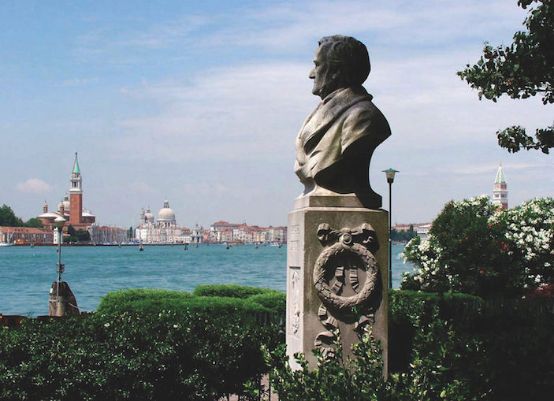Traveling with Wagner
The three authors Markus Kiesel, Joachim Mildner and Dietmar Schuth present "Wandrer heisst mich die Welt. In Richard Wagner's footsteps through Europe", they present a kind of historical travel guide.

I don't know whether I should recommend this 1.8-kilogram book to Wagner fans or Wagner detractors, because the wealth of information could give the former a stomach ache because there is so much they didn't know, and the latter could be put off from the outset because they don't want to learn about the foibles of a traveling composer in the 19th century. But I promise both that it contains just as much curious, amusing, informative and touristy information about the composer as his autobiography My life. And in this respect it is the ideal complement.
Over 200 places and cities at more than 500 addresses in 15 nations are listed: Where Wagner stayed; how he traveled through Europe on foot, by stagecoach, by sailing and steam ships and by train and "left behind" monuments and memorial and honorary plaques on house facades in countless places.
The results of his extensive research are recorded in entertaining yet concise texts and 895 illustrations - including his boots! After all, anyone who has walked the various Swiss mountain trails, for example to the Faulhorn near Grindelwald (2681m) or twice up Mount Pilatus (2128m), and also crossed the Russian border illegally, must have worn very good footwear. In Milan, he also climbed around on the roof of the cathedral. In Genoa, he had to climb six flights of stairs in the hotel, but from there he was able to follow the ships entering the harbor with his "Doppel-Gucker" (binoculars). In Graupa (near Dresden), he can be found jogging: "I run, lie in the woods, read, eat and drink, and try to forget about making music." In the Upper Bavarian municipality of Jachenau (near Bad Tölz), the mountain hiking trail on which Wagner climbed up to the Hochkopf Hut (1299m) is described. In Prague, he encouraged the people in the "Schwarzer Ross" to sing the Marseillaise and shocked them with a daring climb up the façade to the second floor.
It is a great disappointment, however, that the name of the finery maker Bertha Goldwag is nowhere to be found, as Wagner wrote her more than three dozen letters over nine years, most of them from Lucerne, in which he asked her for "leggings and jackets" and for vast quantities of fabrics for robes, blankets and curtains; the changing locations had to be aesthetically furnished in each case; however, she was no longer asked to furnish Wahnfried. Surprisingly, Bayreuth and the surrounding area is only represented by ten pages in the "Germany" chapter, which runs to almost a hundred pages, which will probably seem completely untenable to Wagner fans.
Naturally, we are provided with every conceivable reference to moments of inspiration for his poetic and compositional work, encounter very well-known and less well-known quotations from Cosima's diaries and collections of letters and, in the end, marvel at how the bustling Wagner managed to reconcile his extensive and often unbearably ranting literary and mostly grandiose compositional work with his meandering travels.
The book is not organized chronologically, but geographically and alphabetically. This is why Switzerland (with Slovakia, the Czech Republic and Hungary) is at the end of the book, but features very prominently with 28 two-column pages and 98 illustrations.
Markus Kiesel, Joachim Mildner, Dietmar Schuth: Wandrer heisst mich die Welt. In Richard Wagner's footsteps through Europe, 272 p., € 54.00, ConBrio, Regensburg 2019, ISBN 978-3-940768-80-3
On page 218, it is announced that the three authors will publish a large volume of images and texts on the subject of "Wagner in Zurich" in the course of 2020.








